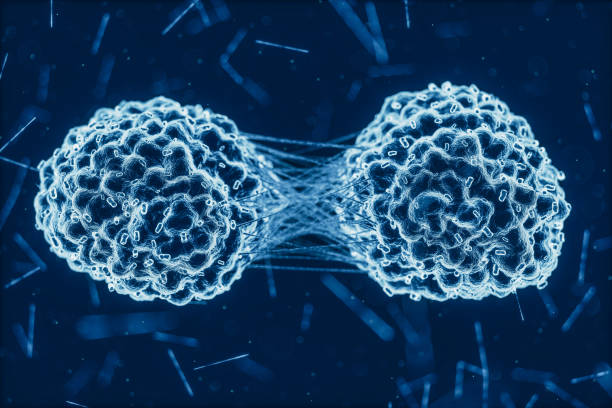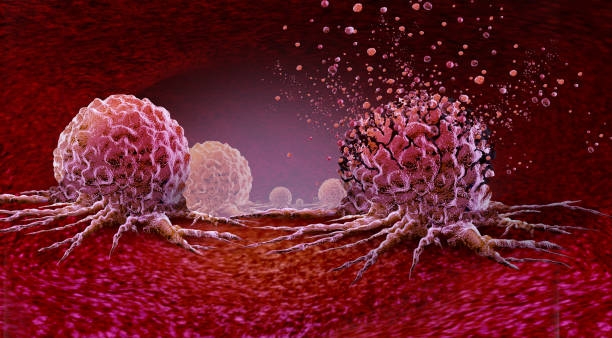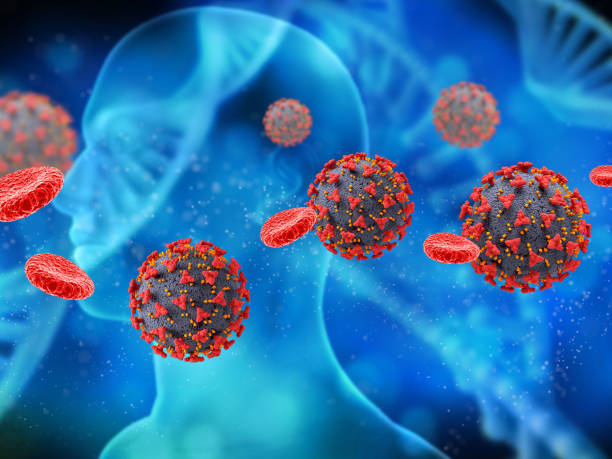Our bodies constantly renew themselves, replacing old or damaged cells with new ones—millions every second. This ongoing process is essential for maintaining health, as cells do not last forever and must be regularly replaced. For growth, healing, or regular maintenance, our cells follow a carefully orchestrated cycle to grow and divide, producing new cells.
The cell cycle is a highly regulated process that ensures the accurate replication of DNA and proper cell division. Think of it as a factory assembly line operating continuously to maintain the body’s function. While some cells complete this cycle in just a few hours, others may take days. Regardless of the speed, the orderly progression of the cell cycle is essential for normal development, tissue repair, and overall bodily function.
However, when the regulation of the cell cycle fails, it can result in unchecked cell division, a hallmark of cancer. Understanding the mechanisms of the cell cycle and what occurs when it malfunctions is crucial for developing more effective cancer treatments.
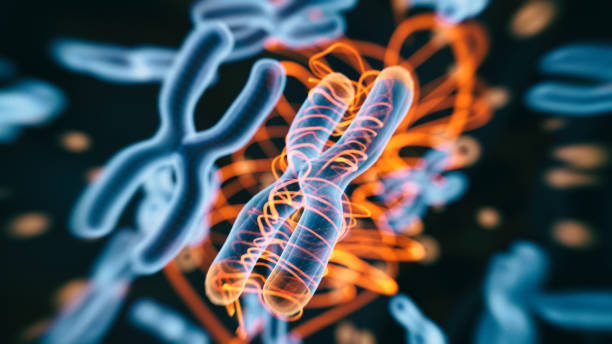
The Cell Cycle
The cell cycle is the process by which cells grow, replicate their DNA, and divide to produce two identical daughter cells. It consists of two main phases: interphase and mitosis. During interphase, the cell prepares for division by growing and duplicating its DNA. In the mitosis phase, the cell completes the division process, resulting in two new cells.
G1 Phase (Gap 1): Preparing for DNA Replication
During the G1 phase, the cell grows in size and produces the proteins and organelles needed for DNA replication. This phase ensures that the cell is prepared for the next step, DNA synthesis, by creating an optimal environment for cell division.
S Phase (Synthesis Phase): DNA Replication
During the S phase, the cell duplicates its DNA, ensuring that each new cell will inherit a complete set of genetic instructions. This critical step is essential for maintaining the integrity of genetic information across generations of cells.
G2 Phase (Gap 2): Preparing for Mitosis
After DNA replication, the cell enters the G2 phase, where it continues to grow and synthesizes proteins required for division. A crucial checkpoint during this phase ensures that DNA replication has been accurately completed without errors or damage.
M Phase (Mitosis): Cell Division
The M phase is where the cell divides into two new cells. It involves the precise separation of DNA and the distribution of the cell’s contents, ensuring each daughter cell can function independently. Mitosis includes several stages, such as prophase, metaphase, anaphase, and telephase, before the final separation of the daughter cells.
Some cells may also enter a resting state called G0, where they stop dividing but remain alive and functional, sometimes for extended periods.
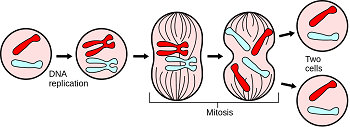
Regulation of the Cell Cycle: Ensuring Order in Cellular Processes
The cell cycle is tightly regulated by a series of checkpoints and signals that ensure each phase is accurately completed before the next one begins. This regulation acts like quality control on an assembly line, preventing faulty products from passing through. When this control system fails, it can lead to diseases like cancer, where cells start dividing uncontrollably.
Key players in cell cycle regulation include:
- Cyclins and CDKs: Driving the Cell Cycle Forward
Cyclins are proteins that signal when the cell should advance to the next phase of the cycle. They work together with enzymes called Cyclin-Dependent Kinases (CDKs) to drive the progression of the cell cycle.
- Checkpoints: Quality Control in the Cell Cycle
Checkpoints throughout the cell cycle function like traffic lights, ensuring that everything is in order before the cell moves to the next stage. If there is a problem, such as damaged DNA, the cell can stop the cycle to make necessary repairs.
Specific Checkpoints
- G1/S checkpoint: Ensures the cell is ready for DNA synthesis and the environment is suitable for cell division.
- G2/M checkpoint: Confirm that DNA replication has been completed accurately and that the cell is prepared for mitosis.
- Spindle assembly checkpoint: This takes place during mitosis and ensures all chromosomes are correctly attached to the mitotic spindle before anaphase(separation) begins.
•Tumor Suppressors: The Brakes of the Cell Cycle
Tumor suppressor genes function like brakes on a car, slowing down or halting the cell cycle when necessary, thereby preventing uncontrolled cell division.
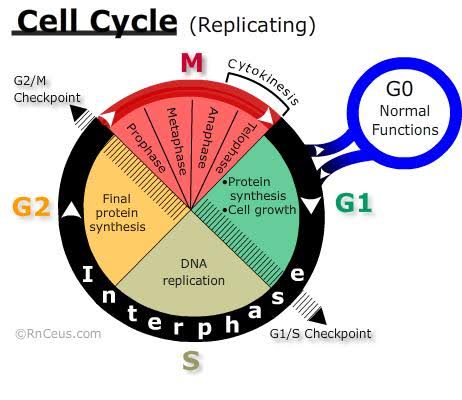
What Happens in Cancer? When the Cell Cycle Goes Awry
Cancer is rarely caused by a single event; it usually results from multiple factors, including environmental and genetic influences, that lead to the transformation of normal cells into cancerous ones. In cancer, the regulation of the cell cycle breaks down, resulting in uncontrolled cell division. This often occurs due to mutations in key regulators of the cell cycle. The primary contributors to this process include:
- Cyclins and CDKs: Overdriving Cell Division
When the balance of proteins that control the cell cycle, such as cyclins and CDKs, is disrupted, it can lead to excessive cell division, contributing to cancer growth.
- Tumor Suppressor Genes: Failing to Stop Cancer
Tumor suppressor genes usually act as brakes, stopping cells from dividing when it’s not safe. If these genes are mutated, the brakes fail, and cells can continue dividing even when there’s damage.
- Oncogenes: Accelerating Cancer Progression
Proto-oncogenes normally help regulate cell growth, but when these genes mutate, they become oncogenes, causing the cell to divide uncontrollably.
Therapeutic Implications: Targeting the Cell Cycle in Cancer Therapy
Understanding how the cell cycle functions and what goes wrong in cancer has opened new avenues for treating the disease. Targeting specific molecules involved in cell cycle regulation offers a strategy to halt cancer cell proliferation. Some promising approaches include:
CDK Inhibitors: Slowing Down Cancer Cell Division
These drugs target the enzymes that drive the cell cycle, slowing down or stopping cancer cell division. For instance, palbociclib is used to treat certain types of breast cancer by blocking CDKs.
Checkpoint Inhibitors: Restoring Normal Cell Cycle Control
Cancer cells often bypass normal checkpoints, allowing them to divide unchecked. Drugs that restore these checkpoints can help stop cancer from growing.
Targeting the G2/M Checkpoint:
- Agents targeting the G2/M checkpoint exploit defective checkpoint control in cancer cells. By forcing cells with DNA damage to enter mitosis prematurely, these drugs can induce mitotic catastrophe, resulting in cell death.
Example:
- Adavosertib(AZD1775): This drug inhibits the WEE1 kinase, which plays a key role in the G2/M checkpoint. By inhibiting WEE1, it forces cancer cells to enter mitosis prematurely, leading to cancer death.
Targeting Mitosis: Halting Cancer Cell Division
Some treatments target the M phase, where cell division occurs. By disrupting this process, these drugs can prevent cancer cells from completing division, causing them to die.
Examples:
- Ispinesib(SB-715992); This drug inhibits kinesin spindle protein(KSP), which is crucial for the separation of chromosomes during mitosis. This disruption leads to cell cycle arrest in mitosis and ultimately results in cell death.
- Alisertib(MLN8237); This drug targets Aurora A kinase, which regulates mitosis. Inhibiting this kinase can lead to errors in chromosome segregation causing cell cycle arrest and cell death.
- Volasertib(B16727).This drug inhibits polo-like kinase1 (PLK1), which plays a key role in various stages of mitosis including spindle formation and chromosome segregation. Blocking PLK1 disrupts the cell cycle leading to cell arrest and cancer cell death.
Challenges and Future Directions
While these treatments offer hope, challenges remain:
- Resistance to Therapy: Overcoming Cancer’s Adaptability
Cancer cells are adaptable and can develop resistance to treatments. Researchers are investigating ways to combine different therapies to overcome this resistance.
Example: Combination therapies, such as pairing palbociclib with letrozole (a hormone therapy), are employed to overcome resistance in breast cancer by attacking the cancer on multiple fronts.
- Side Effects: Minimizing Damage to Healthy Cells
Because the cell cycle is essential for normal cells, some treatments can harm healthy cells, and cause side effects. Scientists are working to develop more targeted therapies to minimize this damage.
Example: PARP(poly ADP-ribose polymerase) inhibitors are more selective for cancer cells with BRCA(a tumor suppressor) mutations. This selectivity reduces damage to normal cells and minimizes side effects compared to traditional chemotherapy.
- Biomarker Development: Personalizing Cancer Treatment
Not all cancers are the same, and treatments for one person may not work for another. Identifying biomarkers— indicators that show how a tumor might respond to treatment—can help customize therapies for individual patients.
Example: Testing for PD-L1 expression in tumors, which can protect cancer cells, from immune attack, helps oncologists determine if immune checkpoint inhibitors like pembrolizumab (Keytruda) will be effective in treating certain cancers, such as non-small cell lung cancer.
- Combination Therapies: Attacking Cancer on Multiple Fronts
The future of cancer treatment may involve combining different drugs to target multiple aspects of the cell cycle and other pathways, reducing the chance of cancer survival.
Example: In ovarian cancer, bevacizumab (Avastin) is often combined with chemotherapy to enhance treatment effectiveness by targeting both blood supply (angiogenesis) and cell division.
Conclusion: A Step Toward Conquering Cancer
The cell cycle is not just a series of events leading to cell division; it is the engine that drives growth and maintains life. When it malfunctions, however, it can result in cancer, where cells divide uncontrollably. By understanding the cell cycle and how it becomes disrupted in cancer, scientists are developing more effective treatments to halt cancer progression.
Research into the cell cycle will continue to be a cornerstone of cancer therapy, providing new insights and opportunities for better, more personalized treatments. As our knowledge grows, we move closer to a future where cancer can be controlled and, ultimately, conquered.
Further Readings
•Weinberg, R.A. (2013).The Biology of Cancer (2nd ed.).
•Cell Cycle Regulation by Checkpoints. Kevin J.Barnum et al. (2014).
•Cell cycle, CDKs and cancer: a changing paradigm.Marcos Malumbres et.al (2009).
•Cell cycle kinases as therapeutic targets for cancer.Silvia Lapenna et al. (2009).

